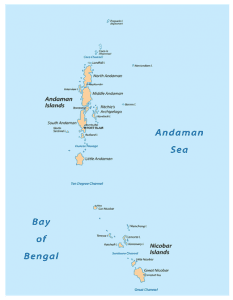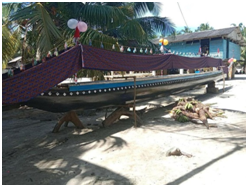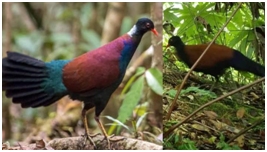POLITY AND GOVERNANCE
1. WHAT INDIA’S DRAFT DIGITAL PRIVACY LAW SAYS?
THE CONTEXT: The latest draft of the data protection law — the Digital Personal Data Protection Bill, 2022 (DPDP Bill, 2022) — has now been made open for public comments and the government is expected to introduce the Bill in Parliament in the budget session of 2023.
THE EXPLANATION:
- This is the fourth iteration of a data protection law in India. The first draft of the law — the Personal Data Protection Bill, 2018, was proposed by the Justice Srikrishna Committee set up by the Ministry of Electronics and Information Technology (MeitY) with the mandate of setting out a data protection law for India.
- The government made revisions to this draft and introduced it as the Personal Data Protection Bill, 2019 (PDP Bill, 2019) in the Lok Sabha in 2019. On the same day, the Lok Sabha passed a motion to refer the PDP Bill, 2019 to a joint committee of both the Houses of Parliament. Due to delays caused by the pandemic, the Joint Committee on the PDP Bill, 2019 (JPC) submitted its report on the Bill after two years in December, 2021.
- The report was accompanied by a new draft bill, namely, the Data Protection Bill, 2021 that incorporated the recommendations of the JPC. However, in August 2022, citing the report of the JPC and the “extensive changes” that the JPC had made to the 2019 Bill, the government withdrew the PDP Bill.
Why have there been so many revisions and changes?
- Constant interactions with digital devices have led to unprecedented amounts of personal data being generated round the clock by users (data principals). When coupled with the computational power available today with companies (data fiduciaries), this data can be processed in ways that increasingly impair the autonomy, self-determination, freedom of choice and privacy of the data principal.
- The current legal framework for privacy enshrined in the Information Technology Rules, 2011 (IT Rules, 2011) is wholly inadequate to combat such harms to data principals, especially since the right to informational privacy has been upheld as a fundamental right by the Supreme Court ( K.S.Puttaswamy vs Union of India [2017]).
- It is inadequate on four levels; first, the extant framework is premised on privacy being a statutory right rather than a fundamental right and does not apply to processing of personal data by the government; second, it has a limited understanding of the kinds of data to be protected; third, it places scant obligations on the data fiduciaries which, moreover, can be overridden by contract and fourth, there are only minimal consequences for the data fiduciaries for the breach of these obligations.
What is the scope of the present formulation of the Bill?
The DPDP Bill, 2022 applies to all processing of personal data that is carried out digitally. This would include both personal data collected online and personal data collected offline but is digitised for processing. In effect, by being completely inapplicable to data processed manually, this provides for a somewhat lower degree of protection as the earlier drafts only excluded data processed manually specifically by “small entities” and not generally.
HEALTH ISSUES
2. FIRST DRUG TO DELAY TYPE 1 DIABETES
THE CONTEXT: The US Food and Drug Administration recently approved Tzield – the first drug to delay the onset of Type 1 diabetes.
THE EXPLANATION:
What is Type 1 Diabetes?
Type 1 diabetes is a chronic medical condition in which the pancreas produces little to no insulin. It was formerly known as insulin-dependent or juvenile diabetes. While it generally appears in children, teens, and young adults, it is known to occur at any age. It is rarer than the occurrence of type 2 diabetes. Preventive measures for this chronic condition are unknown. Symptoms include maintaining blood sugar level through regular monitoring, insulin therapy, diet and exercise.
What is Tzield?
- Tzield is a monoclonal antibody injection that is capable of preventing the body’s immune system from mistakenly attacking cells in the pancreas that make insulin. It was developed by drugmakers Sanofi and Provention Bio. The common side effects of this drug are decreased levels of certain white blood cells, rashes and headache. It can be administered to people aging 8 and older, who have early symptoms of type 1 diabetes. It is capable of delaying the onset of stage 3 type 1 diabetes in adults and in pediatric patients aging 8 years and above who have stage 2 type 1 diabetes.
- The approval for the medication was given based on the results of phase 2 of the clinical trial, involving 76 participants, who randomly received the drug or a placebo once daily intravenously for 14 days.
Why is the approval significant?
- People with type 1 diabetes usually require multiple injections of insulin every day for the rest of their lives. This causes a huge financial burden. In the absence of these treatments, patients will develop serious health complications, including diabetic ketoacidosis or death.
- Tzield’s ability to delay the clinical diagnosis of type 1 diabetes will reduce the financial burden of the ailment for months to years. It will also improve the quality of life for those who have been diagnosed with type 1 diabetes.
ENVIRONMENT, ECOLOGY AND CLIMATE CHANGE
3. COP27 ESTABLISHES ‘LOSS AND DAMAGES’ FUND FOR CLIMATE REPARATIONS
THE CONTEXT: Delegates at the U.N.’s climate conference in Sharm el-Sheikh, Egypt thrashed out an agreement to establish a ‘Loss and Damages’ fund to compensate the most vulnerable countries for damages from climate-linked disasters.
THE EXPLANATION:
- The two-week long climate conference in Egypt has drawn to a close with a symbolic victory in the form of a fund that will compensate some of the countries bearing the brunt of climate change-linked natural disasters. However, progress on action to keep temperatures from rising beyond 1.5°C of pre-industrial levels was limited.
- The 27th edition of the United Nations Conference of the Parties was projected to be an ‘implementation’ COP that would have decisively resolved questions on how developed countries, responsible for the bulk of historical emissions, would make good on an old promise to provide developing countries $100 billion annually by 2020. And whether the world would commit to end all categories of fossil fuel, and not just coal. Despite hours of negotiations, these deadlocks remain.
- COP27 will certainly be remembered as the COP of Loss and Damages (L&D). A nearly three-decade old movement, first initiated by the island nation of Vanuatu and the Alliance of Small Island States, has come to partial fruition.
- There will now be a dedicated fund to compensate the most vulnerable developing countries that are already bearing the brunt of climate change-linked natural disasters. L&D refers to impacts of climate change that cannot be avoided either by mitigation (cutting greenhouse gas emissions) or adaptation (modifying practices to buffer against climate change impacts).
- They also include not only economic damage to property but also loss of livelihoods, and the destruction of biodiversity and sites that have cultural importance. This broadens the scope for affected nations to claim compensation.
Who will contribute ?
- The text approved at Sharm el-Sheikh only commits to a fund being created and leaves discussions for how it is to be set up and, most importantly, who will pay how much to it, for future COP negotiations. While there have been nominal commitments by Scotland and Wallonia (Belgium) to donate to such a fund, the estimated L&D is already over $500 billion.
- During negotiations this year, the European Union pressed hard for China, the Arab states and “large, developing countries” — and this could include India — to contribute on the grounds that they were large emitters.
- This already opens up fresh occasion for acrimony in future COPs and given that barely a third of committed climate finance has made its way to developing countries, the L&D fund too might take years before it can meaningfully operate. While the gain is incremental, countries ought not to lose momentum and must work harder to ensure that COPs remain credible catalysts and are not occasions for pyrrhic victories.
PRELIMS PERSPECTIVE
4. GEOGRAPHICAL INDICATION TAG FOR THE NICOBARI HODI CRAFT
THE CONTEXT: The Geographical Indications Registry, Chennai, has received an application from the Tribal Development Council, Andaman & Nicobar Islands, seeking the Geographical Indication (GI) tag for the Nicobarihodi craft. This is the first application from the Union Territory seeking a tag for one its products.
THE EXPLANATION:
About Nicobari hodi-
- The hodi is the Nicobari tribe’s traditional craft.

- It is an outrigger canoe, very commonly operated in the Nicobar group of islands.
- The technical skills for building a hodi are based on indigenous knowledge inherited by the Nicobarese from their forefathers.
- The hodi is built using either locally available trees or from nearby islands, and its design varies slightly from island to island.
- Considerations to be taken into account including the length of the finished canoe, which has to be 12 times that of its width while the length of the undressed tree trunk has to be 15 times this width.
- Hodis are used for transporting people and goods from one island to another, for sending coconuts, for fishing and racing purposes.
- The tuhet, a group of families under a headman, consider the hodi an asset.
- Hodi races are held between islands and villages.
About Geographical Indication (GI) Tag-
- Geographical Indication (GI) is an indication used to identify goods having special characteristics originating from a definite geographical territory.
- The Geographical Indications of Goods (Registration and Protection) Act, 1999 seeks to provide for the registration and better protection of geographical indications relating to goods in India.
- It is governed and directed by the WTO Agreement on Trade-Related Aspects of Intellectual Property Rights (TRIPS).
- It was decided and also stated under Articles 1 (2) and 10 of the Paris Convention that the protection of industrial Property and Geographical Indication are elements of Intellectual Property.
- It is primarily an agricultural, natural or a manufactured product (handicrafts and industrial goods).
- This tag is valid for a period of 10 years following which it can be renewed.
5. BLACK-NAPED PHEASANT-PIGEON
THE CONTEXT: Scientists have rediscovered the black-naped pheasant pigeon, a rare bird that was last sighted almost 140 years ago in Papua New Guinea. The bird was spotted deep in the forests of Papua New Guinea in footage captured by the research team.
THE EXPLANATION:
About Black-Naped Pheasant-Pigeon
- Before the recent rediscovery, Black-Naped Pheasant-Pigeon was first and last seen in 1882.

- It is a large, terrestrial pigeon having black and orange feathers and red eyes.
- It feeds on seeds and fallen fruits.
- The species is endemic to Fergusson Island in Papua New Guinea.
- It split from the species Otidiphaps nobilis, which diverged from all other species some 26.1 million years ago. Otidiphaps nobilis is part of the Columbidae family, which diverged from all other species during the Paleogene period, some 32.7 million years ago.
- The population is dwindling because of the loss of forest habitats, which is caused by the logging and conversion for subsistence agriculture gardens. Conservation activities of the species’ habitat are few and far between.
- In July 2021, though the species’ population is undetermined, was listed as a critically endangered species by the International Union for Conservation of Nature (IUCN), with an estimated population of 50 to 249 birds.
How was the species rediscovered?
- Black-Naped Pheasant-Pigeon was rediscovered by a research team that was part of The Search for Lost Birds – a collaboration between BirdLife International, Rewild, and American Bird Conservancy. The objective of the collaborative initiative is to rediscover bird species that have not been declared as extinct but has not been sighted for more than a decade. Currently, there are 150 such species that has remained elusive for more than 10 years.
- Researchers, as part of The Search for Lost Birds, sought to find Black-Naped Pheasant-Pigeon since 2019. In September 2022, they found the species at the western slope of Mount Kilkerran – the highest peak of Fergusson Island. This is only the second time in history that the species has been spotted. Confirmation of the species’ presence gives hope for other birds that have not been spotted in decades. The detailed data provided by the research team will form the basis for the conservation of endemic bird species of Fergusson Island.
6. DALAI LAMA RECEIVES GANDHI MANDELA AWARD
THE CONTEXT: The 14th Dalai Lama was conferred the Gandhi Mandela Award 2022 at Thekchen Choeling in Dharamshala’s McleodGanj by Himachal Pradesh governor Rajendra Vishwanath Arlekar.
THE EXPLANATION:
- The Tibetan spiritual leader, receiving the peace prize from the New Delhi-based Gandhi Mandela Foundation, said the qualities of non-violence and compassion had been ingrained in Indian culture for thousands of years.
- “The Gandhi Mandela Foundation is overwhelmed to accomplish the historical ceremony when the Gandhi Mandela Award is conferred to His Holiness Dalai Lama.
- The event was attended by former Chief Justice of India Justice KG Balakrishnan and former Supreme Court Justice Gyan Sudha Misra.
What is the Gandhi Mandela Award?
- A government of India registered Trust, the Gandhi Mandela Foundation is a non-profit organisation, formed with the motive to promote Mahatma Gandhi’s and former President of South Africa Nelson Mandela’s values of non-violence. It has constituted an international prize, the Gandhi Mandela Award.
- The foundation instituted the award on the 150th birth anniversary of the Father of the Nation, MK Gandhi.
Who gets the award and how are they selected?
- The award is given to personalities who have carried forward the legacies of Gandhi and Mandela by making significant contributions in the fields of Peace, Social Welfare, Culture, Environment, Education, Healthcare, Sports and Innovation.
This time, the awardee, Dalai Lama, was selected by a jury including former Chief Justice of India KG Balakrishnan and Justice Dipak Misra, former Supreme Court Judge Gyan Sudha Misra, former Chief Justice of Nepal Justice Kedarnath Upadhyay and former Chief Justice of Bangladesh Justice MD Tafazzul Islam.
THE PRELIMS PRACTICE QUESTION
QUESTION OF THE DAY
Q1. Consider the following statements:
1. Barren Island is the only active volcano of India.
2. Narcondam Island is an example of dormant volcano.
3. Barren Island is located north of Narcondam Island.
Which of the statements given above is/are correct?
a) 1 and 2 only
b) 2 and 3 only
c) 3 only
d) 1, 2 and 3
Answer: A
Explanation:
Please refer to the given map:




